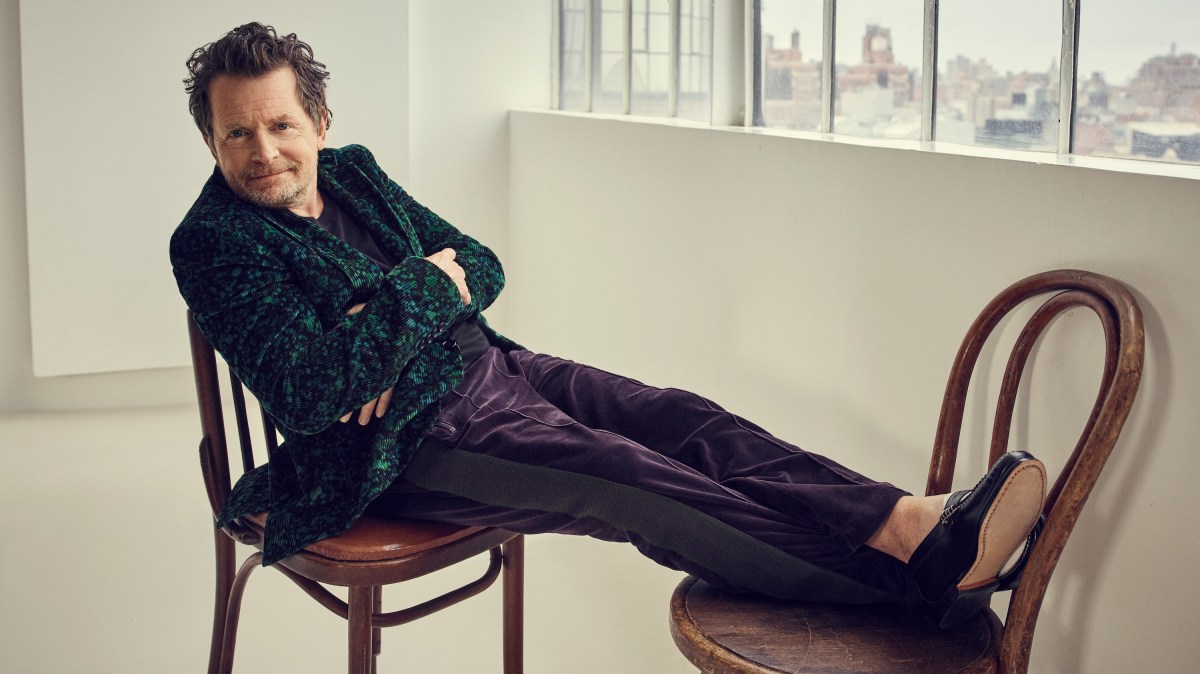It’s a cold January night in Los Angeles. A vast shopping mall car park has been sprayed with water so that it glistens and is then lit at great expense. Even in the farthest corners there are artful shadows and streaks of luminescence.
You are a 23-year-old television actor in a sitcom at a time when that means middlebrow with a laughter track and a jolly theme song. Now you have been shanghaied into a movie produced by the great Steven Spielberg. You marvel at the lighting, the equipment, the free food. You are dressed in a puffer jacket over many layers of shirts, playing someone called Marty McFly, unaware that this role is about to make you an indelible part of 1980s pop culture. The cameras roll, the back of a lorry opens and out comes a swirl of dry ice and a car you haven’t seen before: a silver DeLorean.
“And this guy jumps out and he goes, ‘Marty!’ ” says Michael J Fox, our hero. “I’m, like, ‘Holy shit!’ ”
The other fellow was Christopher Lloyd in character as Doc Brown, a wild-haired, white-coated scientist who has turned a substandard sports car into a time machine. Fox was meeting him for the first time as the cameras rolled. There had been zero rehearsal. They were filming at night because Fox, after a period of penury, was now doing two full-time jobs at once.
“Some would say it was impossible,” Fox says, echoing Sherlock Holmes. “I say it’s improbable.”
The movie we now know as Back to the Future had been shooting for six weeks with another actor, Eric Stoltz, in the lead role, but the film-makers were unhappy with his performance. They decided to replace him with Fox and start all over again. The rest of the cast were startled, the crew unnerved. Robert Zemeckis, the director, recalls giving them the news and then nipping to a payphone and calling his wife to say: “I’m going to finish this movie and then we’re moving to Alaska. Because this is the end. My career is completely over.”
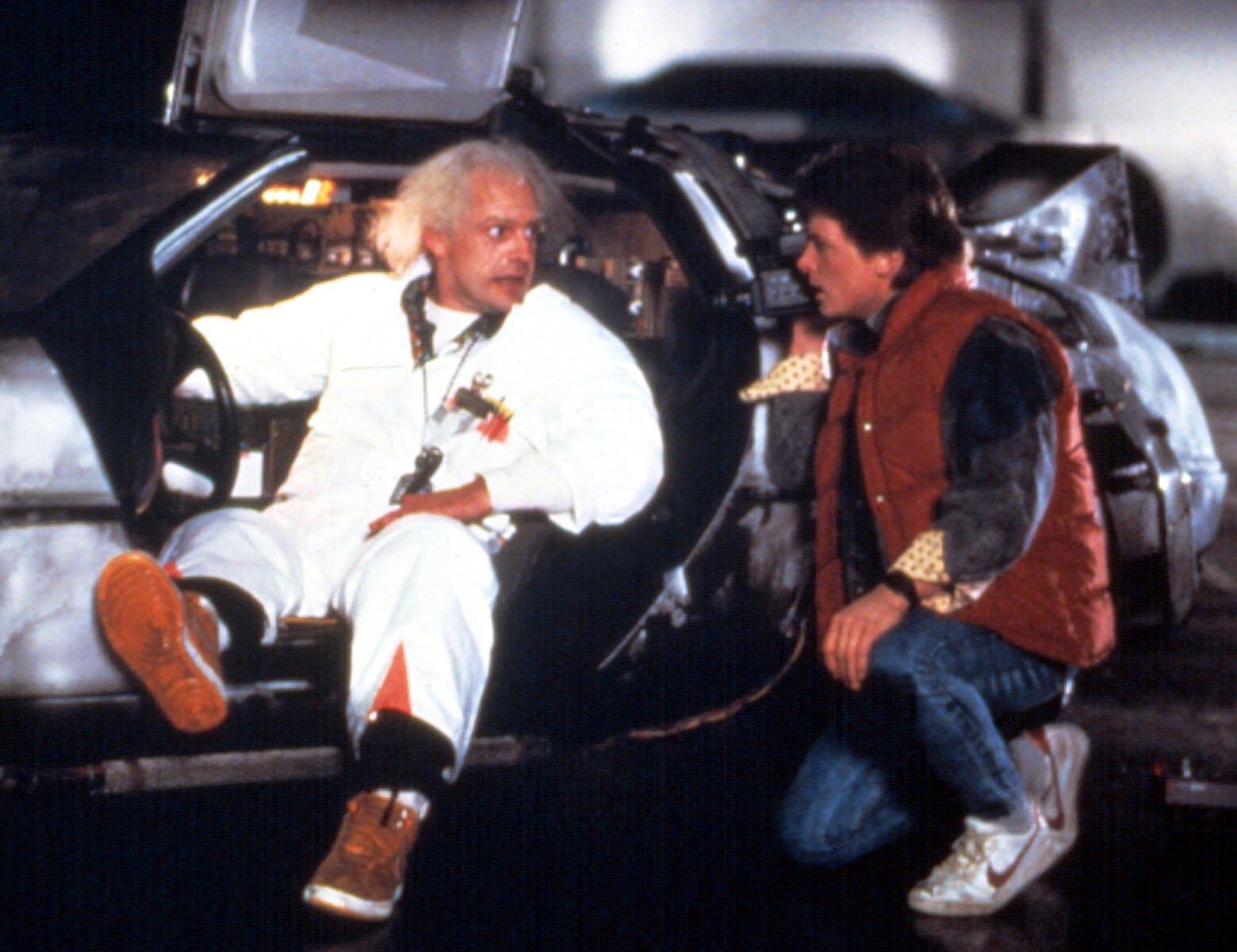
Christopher Lloyd as the eccentric Doc Brown and Fox as Marty McFly with their time-travelling DeLorean in Back to the Future, 1985
REX
If you watch the film and know to look for it, you can see an expression of pure blank bewilderment flit across Fox’s face as Lloyd starts into it: his eyes bulging, his face pulsing and twitching with ideas.
“He came out and exploded into his Chris-ness, his Chris-tiosity,” Fox says. “And I realised it was going to be great.”
We are seated in Fox’s office in Manhattan 40 years later. At 64 he looks more or less the same — except that for more than half of his life now he has lived with Parkinson’s disease, a degenerative brain condition that can cause involuntary movements, stiffness and loss of balance. Mostly he still sounds like himself but also like a man who must sometimes fight to make himself understood. Several times he talks about “having the courage to stay to the end of the sentence”, which feels like both a metaphor and a pep talk. He has broken quite a lot of bones lately and no longer walks for fear of falling.
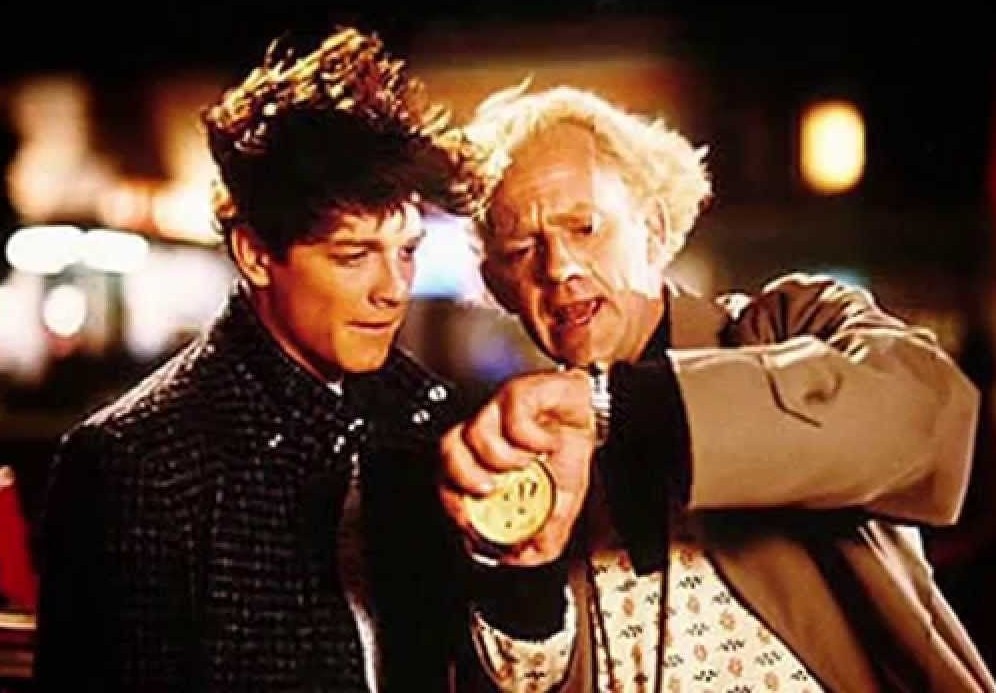
Lloyd on set with Eric Stoltz, who was initially cast as McFly before the film-makers chose Fox, below, and reshot the movie from scratch
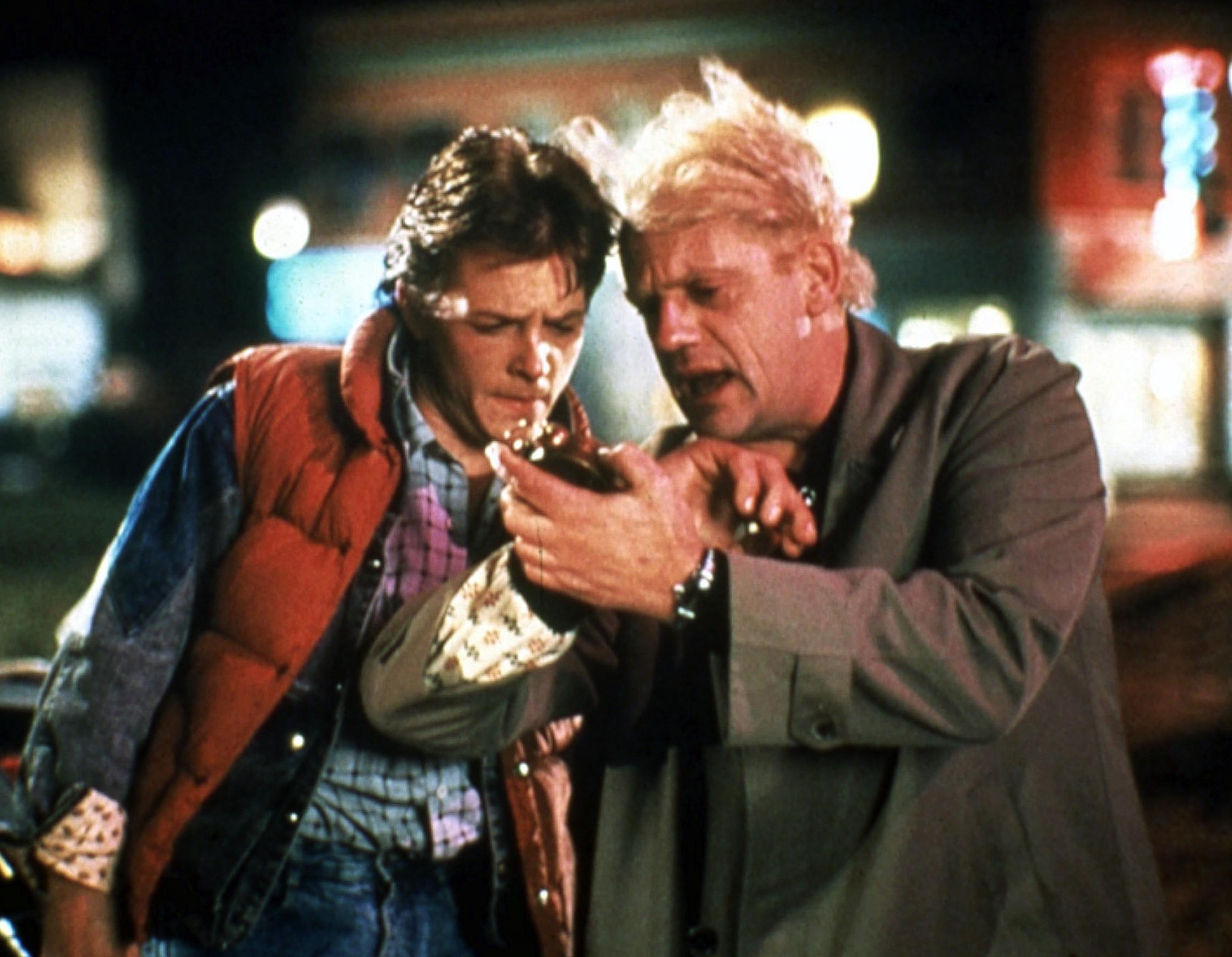
SHUTTERSTOCK
Yet he has also become a beacon for anyone with the disease. A friend of mine whose father died with Parkinson’s used to watch Fox obsessively whenever he appeared in public. I suppose he feels the pressure of all these people looking to him? “It’s lovely,” Fox says. “It’s nice to have.”
Once, when people saw someone with Parkinson’s, their hands shaking and their step unsteady, they thought the person must be drunk. “Now you just have to say, ‘I have what Michael J Fox does,’ ” he says. His foundation has raised more than $2 billion for research into early detection and treatments.
• Michael J Fox gives £5m to Scottish scientists working on Parkinson’s
Fox has a ginger goatee and is dressed in a grey T-shirt and blue tracksuit trousers. His hair is red-brown and mussed up under a white baseball cap, and he keeps a small towel on his knee that he picks up from time to time to wipe his face. On one wrist he has a silver watch, and sometimes when he sways it clonks on one of the metal arms of the chair. Talking to him about Back to the Future feels like interviewing a war veteran about D-Day.
Watching the film now, you travel even further back in time than Marty does. “2025 to 1985 is a bigger gulf,” Fox says. “There are much more changes to the culture.”
He thinks the film speaks to us because it is about standing up to a bully, and “right now… in the present we’re having a bully problem. Bullies all over the place.” Bob Gale, the film’s co-writer with Zemeckis, based the character of Biff the bully at least partly on Donald Trump, who now looms over all of us. I suppose that is what Fox is talking about?
“There’s a little dystopian stuff happening,” he says. He worries about funding for science in the US, he worries about the arts. “And Jimmy Kimmel can’t be funny. It’s just, what are you talking about?”
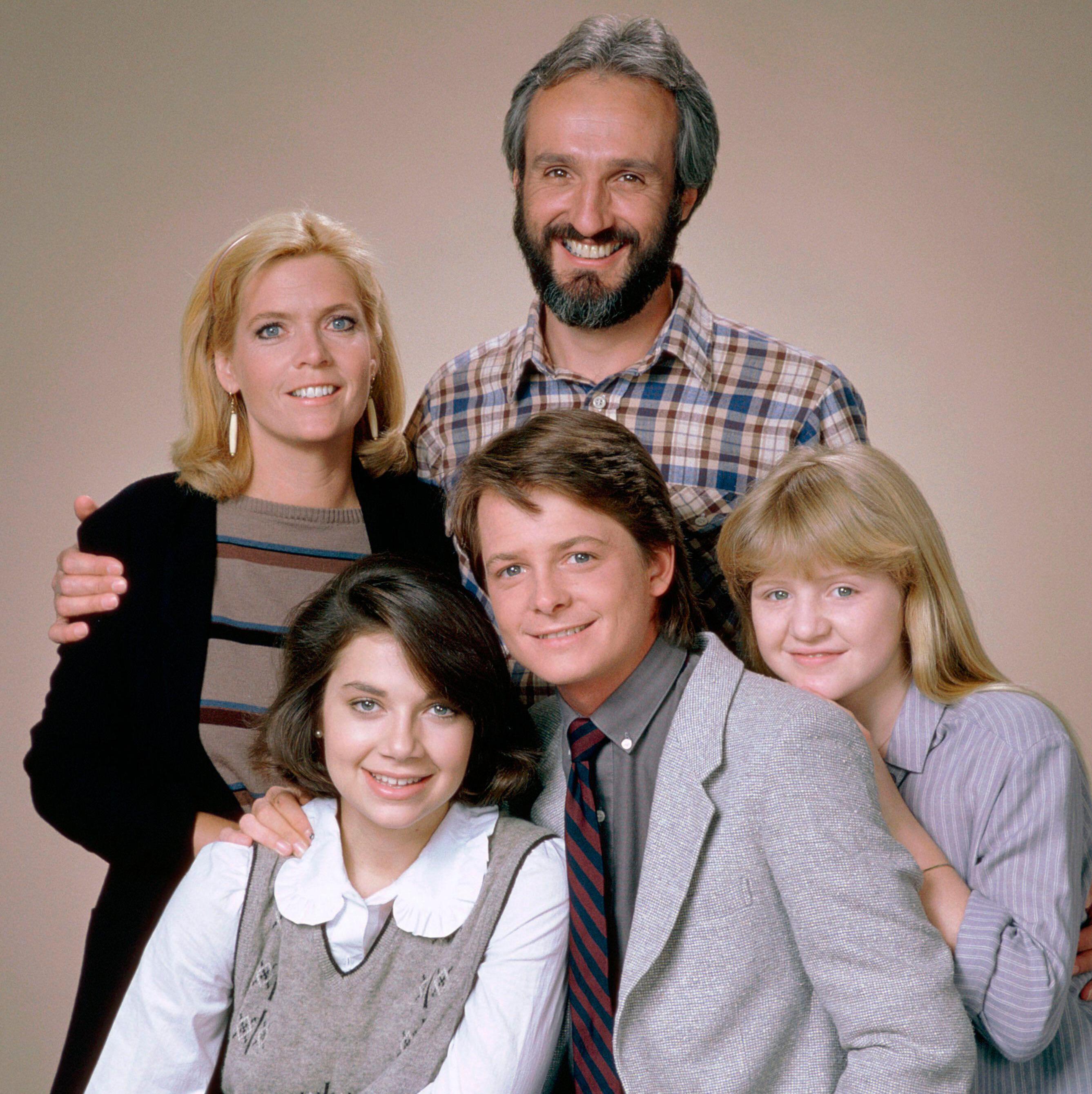
Fox with the cast of Family Ties, 1982
ALAMY
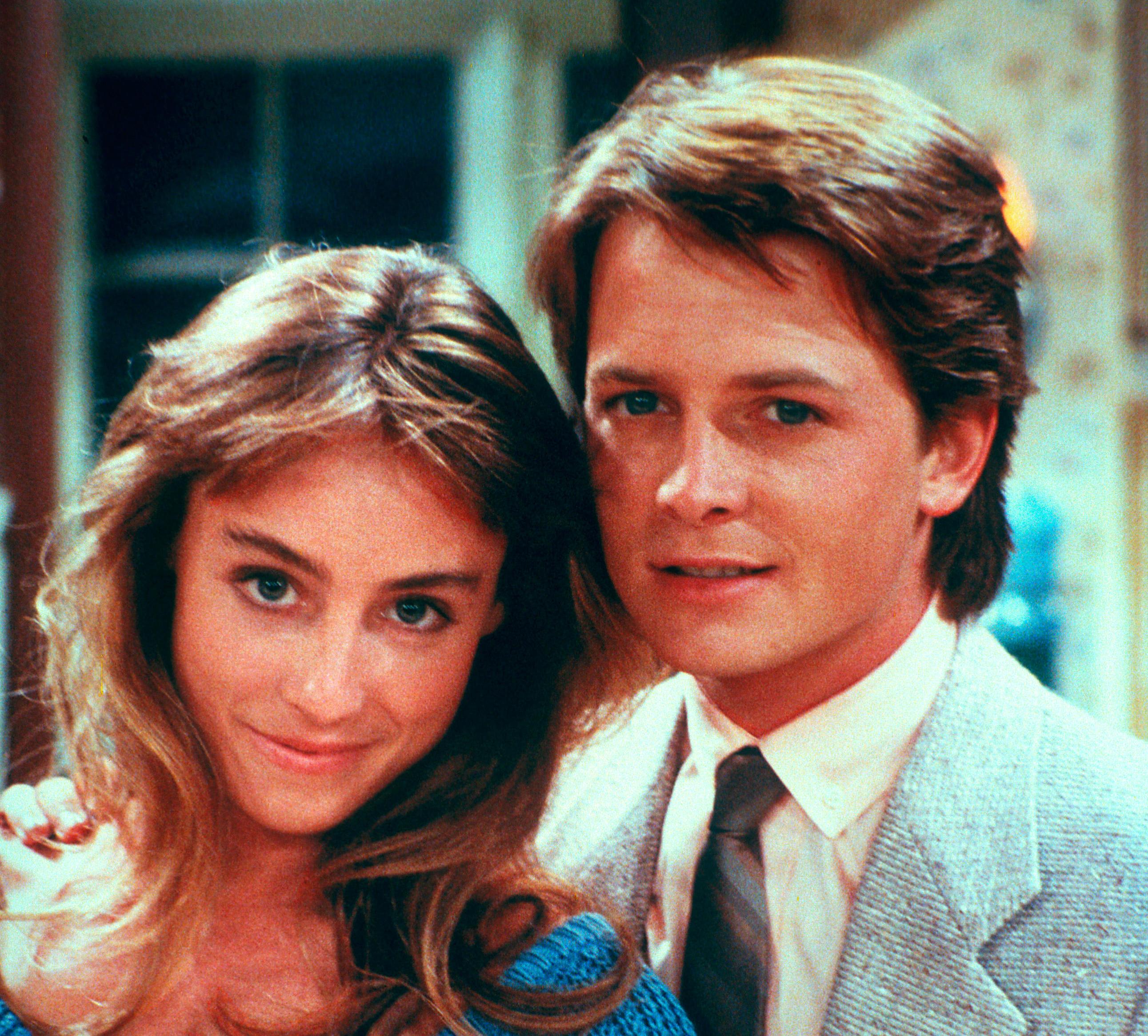
He met his future wife, Tracy Pollan, on set when she was cast as his girlfriend in 1985
ALAMY
It’s not just politics, though. “Parkinson’s is a bully. There are all kinds of bullies.” He looks up, like Marty looking up over Biff’s shoulder, before he throws an air punch. “You stand up for yourself,” he says. “And I think we are gearing up for that. I think we are gearing up for stopping the bullies.”
Fox has written four books about living hopefully with Parkinson’s. Now he has co-written a fifth, called Future Boy, about being shoved on to the set of Back to the Future. I didn’t expect it to be so exciting. It’s almost as thrilling as the film.
“I was just this kid,” he says of the year his career went into orbit. “A 23-year-old kid who lucked into a TV series after a couple of years of poverty. And this upped it one degree.”
Today he lives in a beautiful building overlooking Central Park. The office is downstairs, in a ground-floor space where you might usually expect to find an upmarket dentist or a plastic surgeon. It is decorated with large black-and-white photographs of his musical heroes (Alice Cooper, the Beatles, Frank Sinatra) and shelves loaded with film and television awards: a Grammy, an honorary Oscar, four Emmys.
His longtime collaborator Nelle Fortenberry sits beside him. She is 63 and has worked with him for 30 years, at his production company and then at the Michael J Fox Foundation for Parkinson’s Research. They wrote Future Boy together, interviewing all the principal players.
• ‘Yes, it hurts a lot’ — Michael J Fox on 30 years of living with Parkinson’s
In the book there are glimpses of Fox’s early life in Burnaby, a suburb of Vancouver, the fifth of six children. His mother was a clerk, his father worked as a police dispatcher. He played ice hockey and lacrosse; he had the occasional fistfight. “And lost a few,” he says. He was always small. “I would never win. My favourite thing — if I was gonna get beat up I’d get in a swing,” he says.
He wanted to be a rock star. “Acting — I just fell into because it paid me,” he says. After landing a few roles as a teenager, he dropped out of school and his father agreed to drive him down to Los Angeles to find an agent. It went well at first, then badly. By his early twenties he was foraging for food from shop dustbins. “I figured out when they threw out the stale cookies,” he says. “I’d just kind of be lurking. I’d jump in and grab the cookies.”
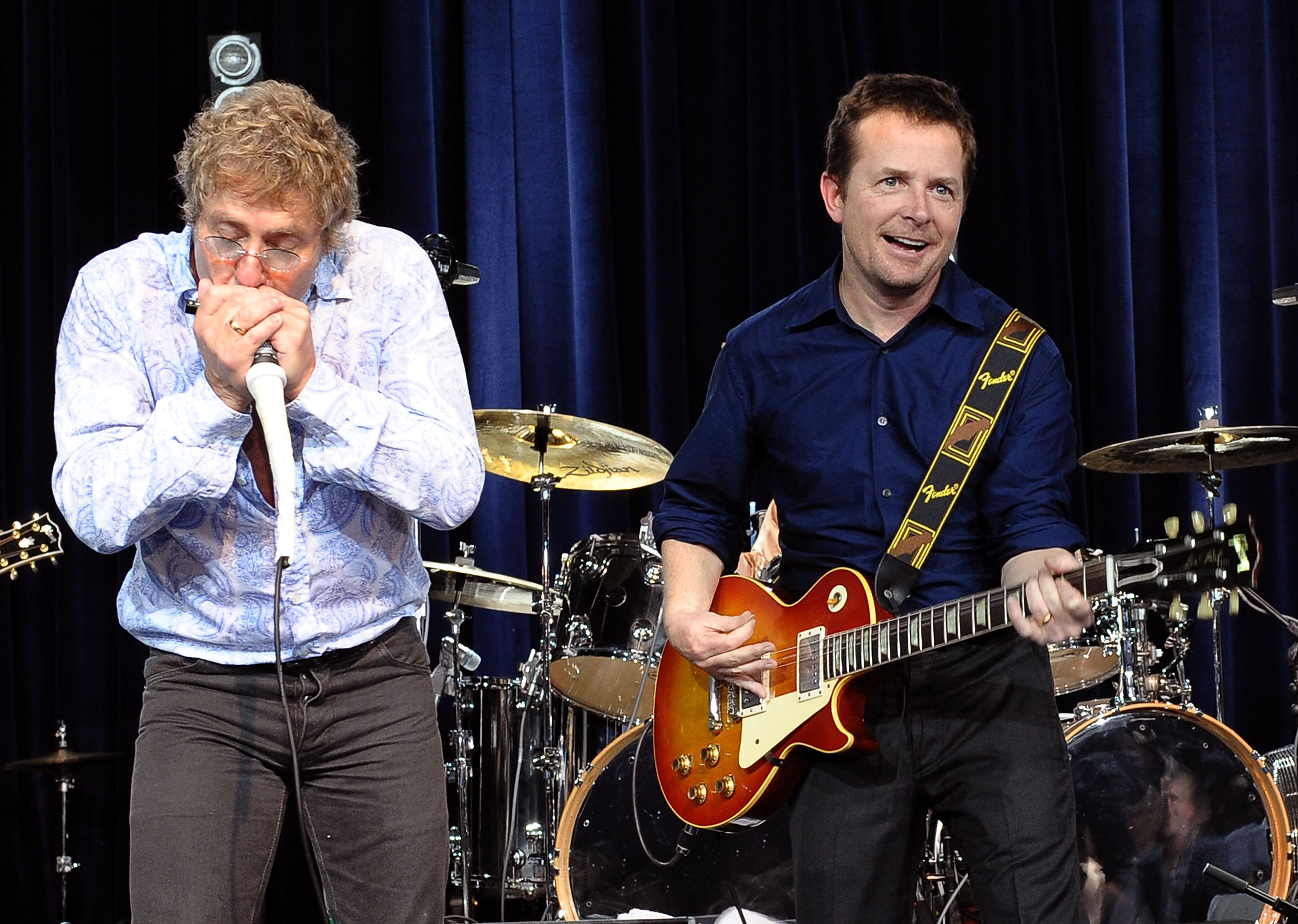
Fox performs with Roger Daltrey of the Who in support of his Parkinson’s foundation, 2008
GETTY IMAGES
He was saved by a sitcom called Family Ties featuring the Keatons: hippy parents who find, to their horror, that their children are conservative. Fox, as their preppy son Alex, began to steal the show. Even so, when the producer Gary Goldberg summoned him to his office one evening, he feared he was about to be fired.
Instead Goldberg explained that his friend Steven Spielberg was making a time-travel movie. Months earlier he had asked if Fox could play the lead and Goldberg had said he was not available as he was busy shooting 26 episodes of Family Ties. So Stoltz, best known today as the heroin dealer in Pulp Fiction, was cast instead.
Stoltz was proceeding with an interesting take on the time-travelling teenager who changes the past and returns to 1985 and a family that is happier than the one he left. Stoltz saw this as a tragedy: Marty is the only one of his family who remembers a sadder past. He dressed in black and approached the role as a Method actor: off camera everyone had to call him Marty.
“He had a more drama-based take on things,” Fox says. “And it’s really, totally valid. It’s a take. It’d be cool to see — to see that movie.”
But the team behind the film — Zemeckis, his co-writer Gale and Spielberg, the executive producer — “had more of a slapstick thing in mind”.
After six weeks of time-machine Hamlet they went to see Sid Sheinberg, the head of Universal Pictures, and told him they wanted to drop Stoltz and put in Fox as Marty. As they started explaining their plan, Sheinberg stood up, put on his jacket and walked out of the office.
“Steven and I are running behind him, still talking all the way to the elevator,” Zemeckis told Fox. “Sid gets in and turns back to us. As the elevator doors close, he says to me, ‘You, sir, are insane.’ ”
Fox did not know any of this at the time. But he acted, from the start, as if he had been cast in a screwball comedy. “Doc!” he squeaks, like an old vaudeville player. “Are you telling me you built a time machine… out of a DeLorean?”
This was exactly what was wanted. “And that,” Fox says, “is more my milieu.”
Stoltz did not want to be interviewed on the record for Fox’s book, but he did come to what Fox calls his “man cave” for a long chat. I ask Fox if he was nervous.
“I don’t get nervous much any more,” he replies. “If you spend your life concentrating on the worst possible scenario, you lose it twice when it actually happens.”
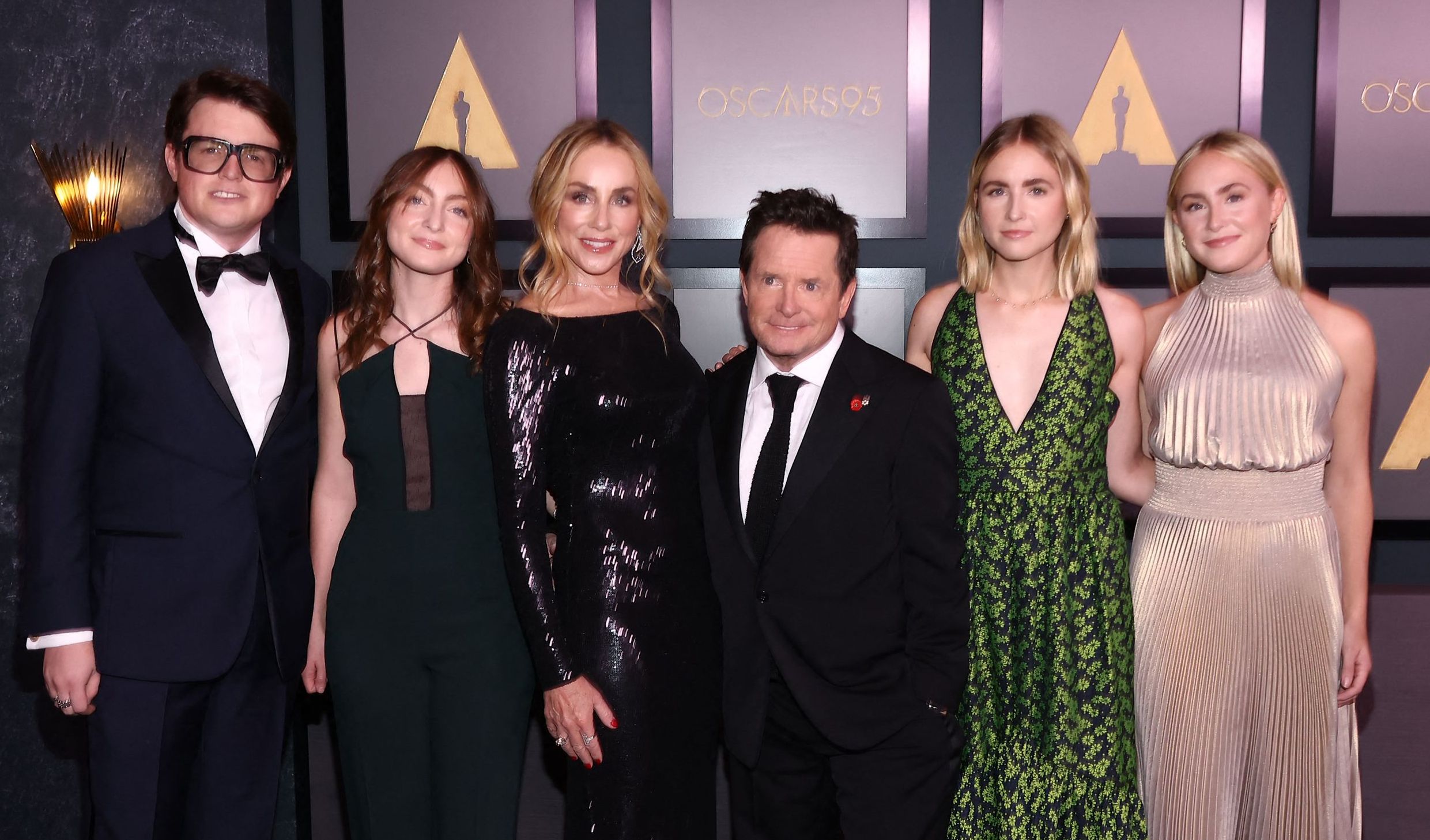
Fox with his family in LA in 2022. From left: his son, Sam, daughter Esmé, wife, Tracy, and twin daughters, Aquinnah and Schuyler
AFP
Fortenberry says she was worried about the meeting until she heard laughter coming from Fox’s office: the two Marty McFlys, tragic and comic, getting on together after all these years.
We look through some photographs of Fox on the set of Back to the Future. There he is asleep on a mattress; there he is asleep standing up against the wall. He was filming until 2am. Then a guy would drive him home and all but carry him into his bed. Another one would wake him three hours later with a revised script for the latest episode of Family Ties. He was exhausted. He thinks this made some of his choices more instinctive.
“I just thought about this guy, this kid whose life — it explodes,” he says.
When he was not asleep, Fox enjoyed himself tremendously. He had always wanted to be a rock star; now he got to be one, playing the Chuck Berry song Johnny B Goode, at a high school dance in 1955. Marty’s parents have got together by this point and the scene is unnecessary, strictly speaking, to the film. It is there just for the joy of it. A generation of musicians now say they were inspired by that scene to pick up a guitar; and Fox, in turn, got asked to play the song in arenas. One of the photographs in his office is of Fox playing Johnny B Goode with the Who. Last year he played guitar on stage with Coldplay at Glastonbury.
“That’s what was great about Back to the Future,” Fox says. “The fantasy of that movie wasn’t for Marty, the fantasy was for me. And the playing guitar for Marty [was] playing guitar for me. It was just — it all just exploded, and I’d skip to the next thing [thinking], this is really happening! This is really happening!”
He was the luckiest kid in the world, living two lives at once, leaving streaks of flame behind him. Back to the Future became a trilogy and made him famous around the world. He met his wife, Tracy Pollan, when she played his girlfriend in Family Ties and they married in 1988, the year that he won his third Emmy (he also won a Golden Globe for the show). And then, six years into this golden run, his luck ran out. In 1991 Fox was diagnosed with Parkinson’s. He was 29.
Youth “wasn’t wasted on me”, he wrote once. “I just didn’t know I’d go straight from young to old.” But he dealt with it in public in the same hopeful manner that made him a star in the first place.
A doctor told him that his physicality, as an actor, might help him to cope with the disease. This was the fellow who improvised a leaping slide over the bonnet of the DeLorean; a chap who once somersaulted over a lover, in the sitcom series Spin City, while taking his trousers off in mid-air.
“It was helpful, to a point,” Fox says. “And that’s [the point] where I break stuff. It’s absolutely incredible the stuff I broke. In a three-year period I broke my elbow, I broke my hand, I got a big infection in my hand and I almost lost my finger.”
He can no longer play the guitar that leans beside his desk. “It’s terrible,” he says. “I had all these little bones broken and it got infected and they had to cut the bones out because the bones got infected.” He shows me his left hand, the fingers bunched and stiff. “I broke my other shoulder, had it replaced. I broke my cheekbone.” He points to it. “I had a plate here.” He looks at Fortenberry. “I’m missing something?”
“It has been just like a tragedy,” she says.
“I take it easy now,” he says. “I don’t walk that much any more. I can walk but it’s not pretty and it’s a bit dangerous. So I just roll that into my life, you know — no pun intended.”
He and Pollan have four children. Sam, the eldest, is a 36-year-old television producer and actor; their twin daughters, Schuyler and Aquinnah, 30, both work in production too. Esmé, 23, a student at Duke University in North Carolina, wants to be an actor. “She’s really good,” he says.
What is it like for them to see him in Back to the Future — their dad in the time before Parkinson’s? “They don’t watch it,” he says.
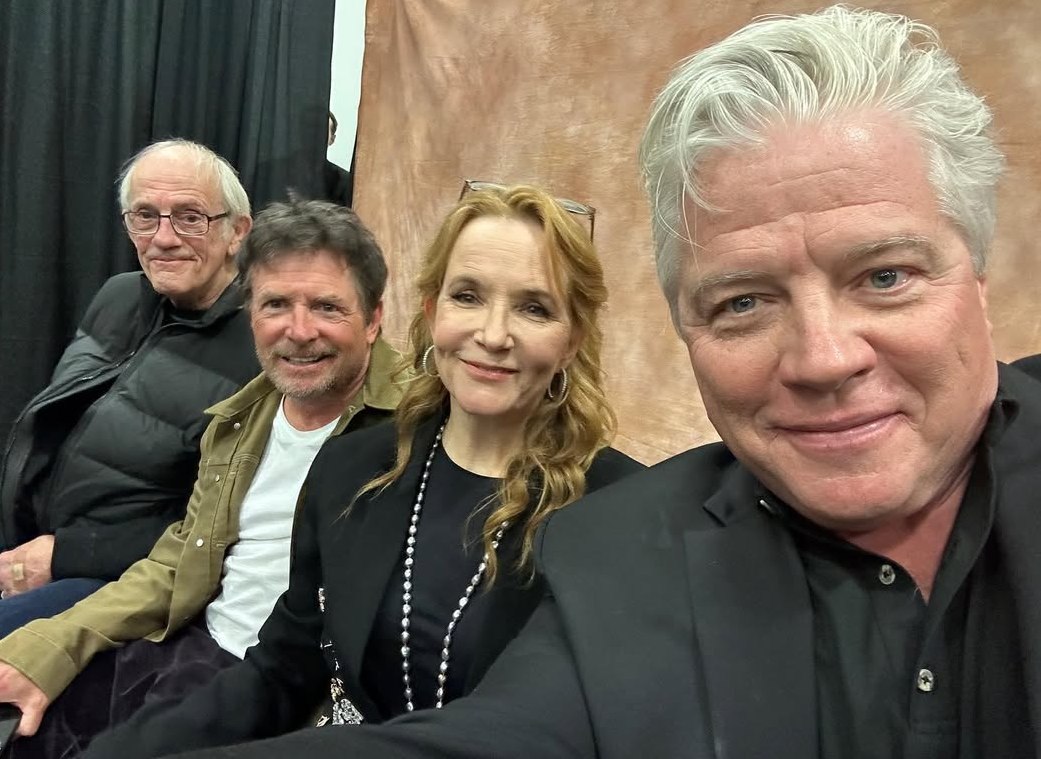
The cast of Back to the Future reunite in 2023. From left, Lloyd, Fox, Lea Thompson and Tom Wilson
LEA THOMPSON / INSTAGRAM
I ask about his future. “There’s no timeline, there’s no series of stages that you go through — not in the same way that you would, say, with prostate cancer. It’s much more mysterious and enigmatic,” he says with an expansive shrug.
“There are not many people who have had Parkinson’s for 35 years,” he says. “I’d like to just not wake up one day. That’d be really cool. I don’t want it to be dramatic. I don’t want to trip over furniture, smash my head.”
• Parkinson’s and me: on good days I convince myself that life is as it was
A few years ago Fox went to a convention full of Future-heads; people with tattoos of him on their legs. “I thought, well, I’ll do this for the fans,” he says. But talking to them from a stage, “I realised — no, it wasn’t for them, it was for me,” he says. “I wanted to express my gratitude to them. They’ve given me so much, my life is so amazing. The disease sucks, but … people don’t feel sorry for me. They don’t think I’m pathetic. They see me as — well, I couldn’t tell you how they see me, but I sense that they see me as a positive force.”
When I get up to go he stands up too, rather gallantly, and clasps my hand. He is pretty busy by the sound of it, dealing with Parkinson’s, with the foundation, with talking to other patients, with recording the audiobook. He is about to appear in the latest series of the Apple TV+ drama Shrinking, in which Harrison Ford plays a therapist with advancing Parkinson’s.
Fox is still going from one thing to the next, just like the kid with two jobs in 1985.
“That’s another thing too, about dying,” he says. “I just haven’t had time.”
I had a panic that the crowd might actually eat me
An incognito cinema trip made Michael J Fox realise Marty McFly had changed his life for ever
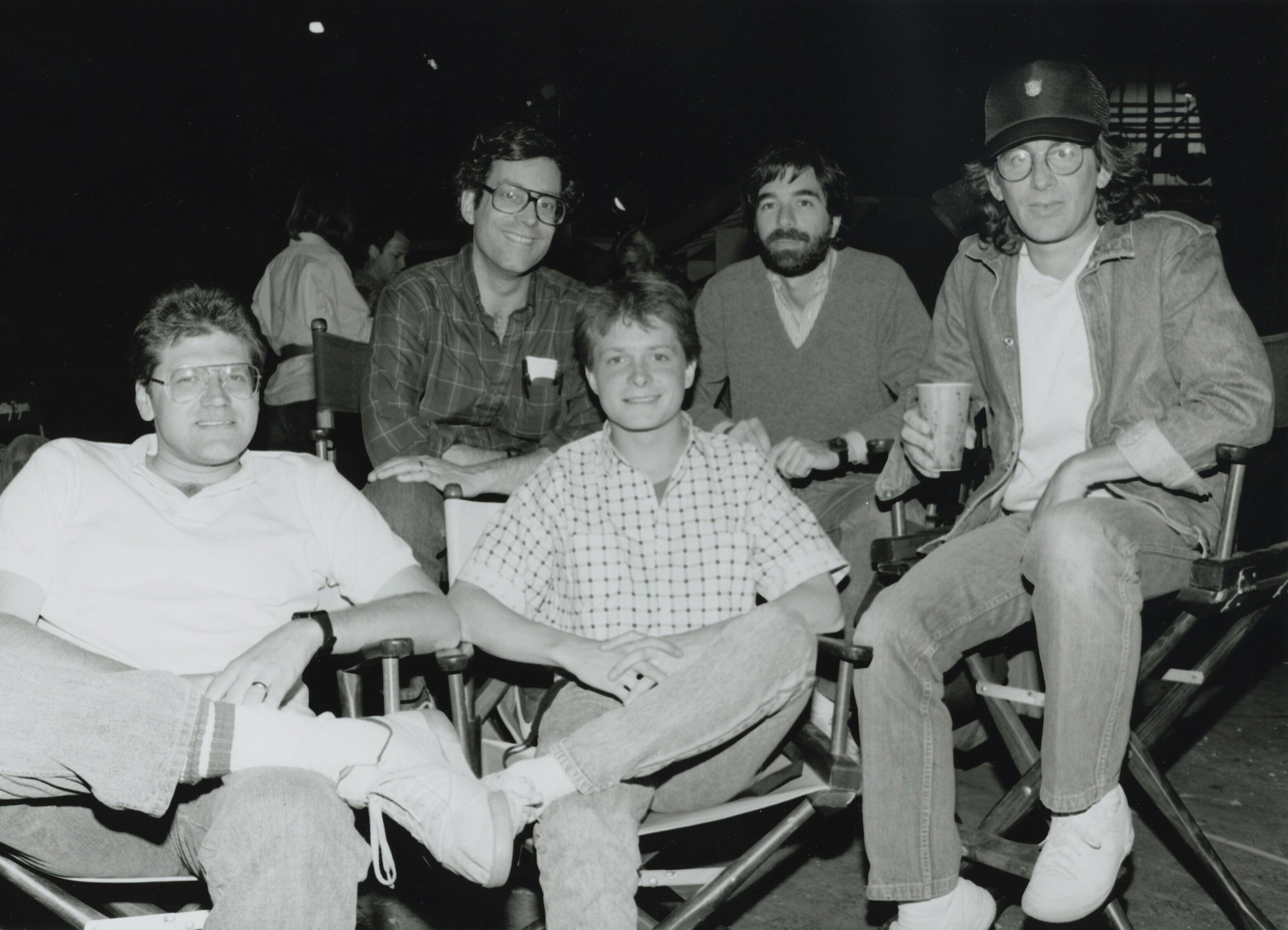
From left: Robert Zemeckis, Bob Gale, Fox, Neil Canton and Steven Spielberg on the set of Back to the Future in Los Angeles, 1985
ALAMY
On July 3, 1985, Back to the Future premiered in Los Angeles, without me. I was disappointed to miss the celebration, given all the work I’d put in. Instead I was in London filming the Family Ties TV movie. It was not good. The movie, intended to be a big ratings stunt to open our fourth season, had been partially my idea, and I couldn’t believe how stupid I’d been — I’d just shot myself in the foot. Two nights before the premiere, I began to get an inkling of Back to the Future’s explosive potential. The phone in my London hotel room woke me in the middle of the night, with its old-fashioned double ring. It was my lawyer (soon to be agent), Peter Benedek. “Mike, I just saw an advanced screening of your movie.” Groggy and disoriented, I mumbled, “I’m sorry, Peter. I probably f***ed it up. I’ll do better next time.” “No, you don’t understand. It’s unbelievably great. Universal predicts it will be the number one movie of the summer.”
The following day Universal asked me to do what felt like a thousand and one satellite interviews for Back to the Future. I humbly accepted the accolades from the press, but I had to take their word for it— I still hadn’t seen the movie.
We finally put the Family Ties movie to bed, where it should have stayed hidden under the covers. Unfortunately, the end result was every bit as terrible as we predicted. The head writer, Michael Weithorn, departed London a few days before me to get the next block of scripts ready. In the taxi leaving the airport after he landed, Weithorn passed a supersize billboard advertising Back to the Future. It was his first clue of the scale of the movie, and the cusp of worldwide stardom that his friend was on. “Wow, look at that,” he said. “Look at Mike, man. Holy shit.”
I flew back to Los Angeles and into a different world. A limousine greeted me kerbside and I asked the driver to take me to the Cinerama Dome, a legendary movie house in Hollywood where Back to the Future was playing. A block from the cinema, I poked my head through the limo’s sunroof to get a better view of the crowds lining up. A cheesy move, and it got us pulled over by a motorcycle cop. I explained to the officer that I was the guy in the movie and I was on my way to see it. He glanced at the poster and back at me. His whole affect changed; he laughed and waved us on. “Enjoy.”
I waited until the movie began before slipping into the darkened cinema, where I took a seat behind a blonde girl. She seemed to enjoy the movie very much. As the credits rolled she turned around, and to my surprise it was Jodie Foster. She looked right past me, eager to beat the crowd out the door. Despite the celebrity spotting, I had not stumbled into an industry screening. This was a real audience who paid real money, and they had whooped, hollered and cheered throughout. I had a palpable feeling that no one wanted to leave at the end. I also sensed, given the reaction, that it might be best for me to get out of there forthwith. Jodie, famous for her brush with the dangerous side of fame, must have had the same aversion to hanging out and being recognised, because I blinked and she was gone. Jodie knew what I was about to learn — people view you differently face to face when they’ve just seen you projected on a 32ft by 86ft screen. I had a sudden panic — not just that they would swarm me the way teenage Family Ties fans had done, but that this crowd might actually eat me. This was next-level shit. My life had changed yet again, another degree beyond the whirlwind changes that the TV show had brought.
So, what did I think of Back to the Future? I loved it. It was a 100 per cent shot of pure adrenaline, as much for me as for the patrons crammed into the theatre. And yeah, that was me up there. Unbelievable. I couldn’t wait to talk to everyone — the producers, cast and crew— to express my pride in what they’d done. The fact that the movie existed at all was a miracle. Bob Gale, the co-writer and producer, reflects: “The script had been rejected 42 times. People kept saying, ‘Oh, time-travel movies don’t make any money,’ which was a true statement.” Until 1985.
The only uncertainty I had related to my own performance; I didn’t think I was terrible, I just had no reference point to compare it to. It wasn’t until Christmas Eve a few decades after I made the movie that I viewed myself in Back to the Future through a different lens. My family had just started decorating the tree and I left the room to grab some popcorn. To their surprise, I never came back. As I passed the den en route to the kitchen, the flicker of the TV caught my eye, along with a familiar opening sequence. An hour later my wife, Tracy, called out, “What are you doing in there?” “I’m watching Back to the Future,” I shouted. “And you know what? I’m really good in it.”
© Michael J Fox 2025. Extracted from Future Boy, published on Tuesday (Headline £22). Order at timesbookshop.co.uk. Discount for Times+ members
